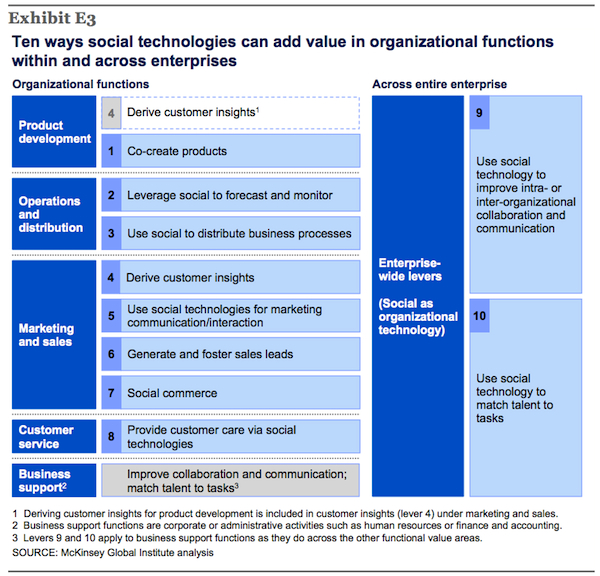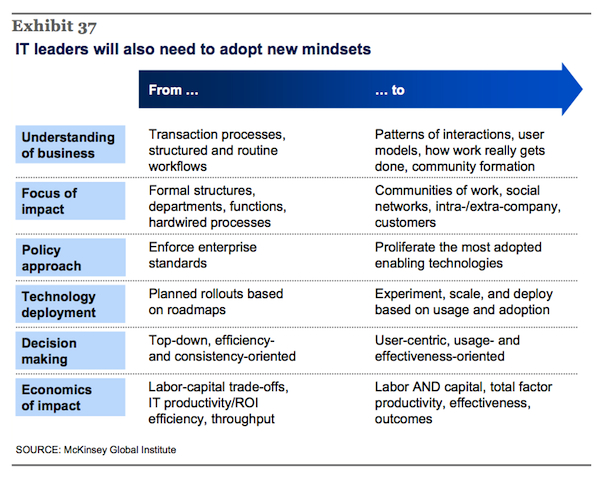This post is on behalf of the CIO Collaboration Network and Avaya
Well, it’s only taken us 3,000 years, but we’re finally getting back together. You may be familiar with this story from Genesis.
But the Lord came down to see the city and the tower the people were building. The Lord said, “If as one people speaking the same language they have begun to do this, then nothing they plan to do will be impossible for them. Come, let us go down and confuse their language so they will not understand each other.”
So the Lord scattered them from there over all the earth, and they stopped building the city. That is why it was called Babel —because there the Lord confused the language of the whole world. From there the Lord scattered them over the face of the whole earth.
Three thousand years later, we may still be scattered. but we are increasingly finding new ways to connect and collaborate. We’ve been slowly and steadily re-connecting and rebuilding, and extending the scope and complexity of our circles along the way; at an accelerating pace over the past century. The internet, social networks, and cloud computing continue to provide innovative pathways to new forms of collaboration. One recent example is Highlight which helps strangers nearby connect to each other. Qualcomm’s Gimbal platform is providing us a glimpse of the next generation web and increased use of contextual awareness. The next generation of applications leveraging rapid connection and collaboration capabilities will continue to stretch boundaries, disrupt incumbents, and create new opportunities for arbitrage.
From an enterprise perspective, new threats and opportunities also exist. In fact, every institution is being affected, and I can’t think of anyone or anything that won’t be impacted by the rewiring of institutions currently upon us.
The McKinsey Global Institute just released a great study titled “The Social Economy: Unlocking value and productivity through social technologies”
The 184 page report makes the argument that social technologies could potentially contribute $900 billion to $1.3 billion in annual value across four commercial sectors: consumer packaged goods, retail financial services, advanced manufacturing, and professional services.
Perhaps what’s most interesting is that it goes on to make the argument that the majority of the potential for value gain comes from improvements in internal collaboration. The study highlights ten ways social technologies can add value in organizational functions within and across enterprises.
No matter who you are, or what you do, the enterprise levers highlighted as 9 and 10 are relevant to every part of every organization. Finding the right people, the right information, and leveraging those assets to help accomplish stated goals in a quicker more efficient manner is the crux behind this entire movement.
In three surveys conducted annually between 2009 and 2011, the TOP 3 areas where measurable gains were consistently realized by companies leveraging Web 2.0 technologies internally were:
- Increasing speed to access knowledge
- Reducing communication costs
- Increasing speed to access internal experts
However, where most companies appear to be stuck is in the area of cultural transformation, which is much easier said than done. Morphing from centralized, command and control hierarchies into decentralized, adaptive, and agile organizations takes time, and there is not yet a well defined methodology for doing so, though thousands of experiments are currently under way.
While business leaders wrestle with evolving their industrial age organizations to compete in a more connected and fast changing world, CIOs must also adapt their approach to empowering the next generation enterprise. The purposes, tools, deployment strategies, and economic evaluation required to empower the next generation of institutions are different, highlighted by the chart below.
The McKinsey study contains a wealth of data and insights and creates a compelling case for the tangible business value of social technologies, most of which has yet to be achieved my most organizations.
As your organization transitions from experimental mode to making the internal business case for tangible business value, what have the most compelling findings or hardest challenges been? Where are you stuck and how can I help?
This post is on behalf of the CIO Collaboration Network and Avaya
Comments
Trackbacks
-
[…] & Company’s 2012 184 page study highlighted that up to $1.3 Trillion may be created by leveraging social technologies. It’s important to highlight that their research and estimates […]


Creating Measurable Business Value through Social Collaboration http://t.co/i4D1mEaz via @zite
Creating Measurable Business Value through Social Collaboration http://t.co/mtMmDjnS #B2B <Excellent detailed post>
Creating Measurable Business Value through Social Collaboration http://t.co/pOrMoxDQ
RT @brianvellmure: Creating Measurable Business Value through Social Collaboration http://t.co/1jTbmdtx
Nice!** @DebAMaher McKinsey ROI-social collab #HRTech @CIOCollab Busns Value/Social Collab http://t.co/ZQ0Ojlve @BrianVellmure #tchat
Creating Measurable Business Value through Social Collaboration http://t.co/nrI9oAgy >the McKinsey report is worth the read
RT @brianvellmure: Creating Measurable Business Value through Social Collaboration http://t.co/46QGwZ0F > re McKinsey Social Economy